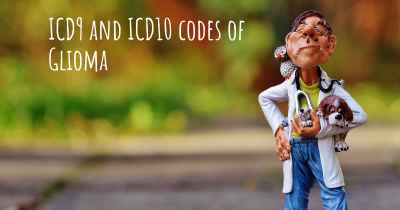Living with Glioma. How to live with Glioma?
Can you be happy living with Glioma? What do you have to do to be happy with Glioma? Living with Glioma can be difficult, but you have to fight to try to be happy. Have a look at things that other people have done to be happy with Glioma

Living with Glioma: Coping Strategies and Support
Glioma is a type of brain tumor that can significantly impact a person's life. While living with glioma can be challenging, there are various strategies and support systems available to help individuals navigate this journey. Here are some important aspects to consider:
1. Medical Treatment and Care
Seeking appropriate medical treatment and care is crucial when living with glioma. It is essential to consult with a team of healthcare professionals, including neurologists, neurosurgeons, and oncologists, who specialize in brain tumors. They can provide accurate diagnosis, treatment options, and ongoing monitoring of the condition.
Treatment options for glioma may include surgery, radiation therapy, chemotherapy, targeted therapy, or a combination of these approaches. The choice of treatment depends on various factors such as tumor type, location, size, and overall health.
2. Emotional Support
Living with glioma can bring about a range of emotions, including fear, anxiety, sadness, and frustration. It is crucial to seek emotional support to help cope with these feelings. Consider the following:
Support groups: Joining support groups for individuals with brain tumors or glioma specifically can provide a sense of community and understanding. Sharing experiences, concerns, and advice with others who are going through similar challenges can be immensely helpful.
Therapy: Engaging in individual or group therapy sessions with a mental health professional can provide a safe space to express emotions, learn coping strategies, and develop resilience.
Family and friends: Lean on your loved ones for support. Openly communicate your feelings and needs, and allow them to be there for you during this difficult time.
3. Lifestyle Modifications
Adopting certain lifestyle modifications can contribute to overall well-being and potentially improve the quality of life while living with glioma. Consider the following:
Healthy diet: Focus on consuming a balanced diet rich in fruits, vegetables, whole grains, lean proteins, and healthy fats. Proper nutrition can support overall health and aid in managing treatment side effects.
Regular exercise: Engaging in physical activity, as permitted by your healthcare team, can help improve mood, reduce fatigue, and enhance overall physical well-being. Consult with your healthcare provider to determine appropriate exercise routines.
Stress management: Explore stress-reducing techniques such as meditation, deep breathing exercises, yoga, or engaging in hobbies and activities that bring joy and relaxation.
4. Monitoring and Follow-up
Regular monitoring and follow-up appointments with your healthcare team are essential when living with glioma. These appointments allow for ongoing assessment of the tumor's progression, treatment effectiveness, and management of any side effects or complications.
Keep a record: Maintain a record of symptoms, side effects, and any concerns you may have. This information can help facilitate productive discussions with your healthcare team during appointments.
Ask questions: Do not hesitate to ask your healthcare team any questions or seek clarification regarding your condition, treatment options, or any other concerns you may have. Being well-informed empowers you to actively participate in your care.
5. Palliative Care and Supportive Services
Palliative care focuses on improving the quality of life for individuals living with serious illnesses, including glioma. It aims to address physical, emotional, and spiritual needs. Consider the following:
Palliative care team: Consult with a palliative care team that specializes in managing symptoms, pain, and side effects associated with glioma. They can provide guidance on pain management, symptom control, and overall comfort.
Hospice care: In advanced stages of glioma, hospice care may be considered. Hospice care provides comprehensive support and comfort measures for individuals nearing the end of life. It focuses on enhancing quality of life and ensuring dignity.
Supportive services: Explore additional supportive services such as home healthcare, counseling services, and respite care to assist with daily activities and provide relief for caregivers.
Living with glioma presents unique challenges, but with appropriate medical care, emotional support, lifestyle modifications, regular monitoring, and access to palliative care, individuals can navigate this journey with resilience and improved quality of life.








